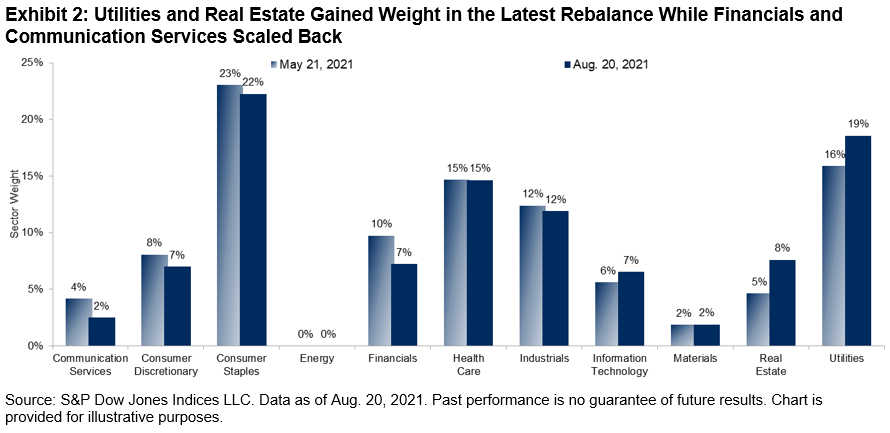The S&P GSCI declined 2.3% in August, as industrial commodities retreated in line with a surge in COVID-19 cases attributed to the Delta variant, as well as signs that China intended to dampen industrial production to curb carbon emissions. In contrast, performance across the soft commodities was impressive, with a variety of production-related disruptions elevating the risk of lower supply.
The S&P GSCI Petroleum fell 5.1% over the month. Oil production picked up across the world, while demand dipped slightly in the wake of a rise in COVID-19 cases. The resumption of aviation, especially long-haul passenger flights, would be critical to the full recovery in petroleum consumption.
Within the industrial metals complex, copper, lead, and nickel fell as China intensified its crackdown on some of the least environmentally friendly components of its economy. The S&P GSCI Aluminum was an exception, reaching a new 10-year high and ending the month up 4.5% and up 34.6% YTD. Supplies of the metal are becoming increasingly tighter as Beijing seeks to curb pollution from the metal’s energy-intensive production process. Environmental concerns are a double-edged sword for industrial metals, as they tend to be some of the worst GHG-emitting commodities, but they are key components in almost every new green technology.
Iron ore prices touched record highs this year, but the S&P GSCI Iron Ore suffered one of its biggest monthly losses ever in August (down 13.3%) as China’s curbs on carbon emissions included limits on the output of steel. Demand for steel has been healthy, but Chinese steel mills are constrained by Beijing’s instruction that production for 2021 should not exceed the record 1.065 billion metric tons produced last year. To meet that goal, steel producers would have to cut output by roughly 10% for the rest of 2021 from their record first-half pace.
The annual U.S. Fed meeting in Jackson Hole came and went without significant market volatility, and the S&P GSCI Gold ended flat for the month. Gold is often viewed as a hedge against inflation and currency debasement, and the Fed’s tapering would tackle both those conditions, thereby diminishing gold’s appeal.
The S&P GSCI Agriculture rose 0.3%, with the softs outperforming. The S&P GSCI Sugar rose 10.8%, marking a new three-year high as estimates for the size of the Brazilian cane crop continued to fall. The S&P GSCI Coffee rose 7.3%, continuing its impressive and volatile two-month rally. Several weather and logistical issues, including new pandemic lockdowns in Vietnam, coalesced to raise the price of a cup of joe.
The combination of stronger-than-expected pork demand and the ongoing lack of labor at U.S. packing plants pushed the S&P GSCI Lean Hogs up 0.9% for the month.
The posts on this blog are opinions, not advice. Please read our Disclaimers.









